Estimated Reading Time: 4 minutes (800 words)
Primary Audience: Early Childhood Educators, Parents, and Caregivers
The Context:
The children in my pre-kindergarten class have been writing many books lately. Most are in the form of a 3-page blank book, which is quick for me to make and accessible for them. Sometimes I ask everyone to have a go at it during our “work centers” time, in which children rotate from one center to another, but they can also choose writing during “play centers” at the end of the day. My heart swells with pride when I hear one of my students ask, “Ms. Komarin, can you make me another book?” “Yes!” I say. “I can’t wait to read it!”
Examples in Action:
One of the things I value most about young children’s writing is what it reveals about them: how are they learning to make sense of their world? Here I share three recent examples of stories written by some of my four-year-old students. In each case, the child thinks of a story, draws it across three pages of a blank book, and then tells it to me when they are finished. I transcribe their words as accurately as possible (mistakes included) to capture their authentic voice. I also try to read it back to them to make sure I got it right.
Going to Arizona by M.W.
M.W. loves to write. He chooses to go to our writing center every chance he gets, and has made great progress as a writer both in terms of the complexity of his drawings as well as the way he follows through on an idea with a beginning, middle and end. He typically tells stories about his past experiences with his family. In the example below, he writes about an eagerly anticipated family trip involving an airplane ride, cake pops, and a splash pad.
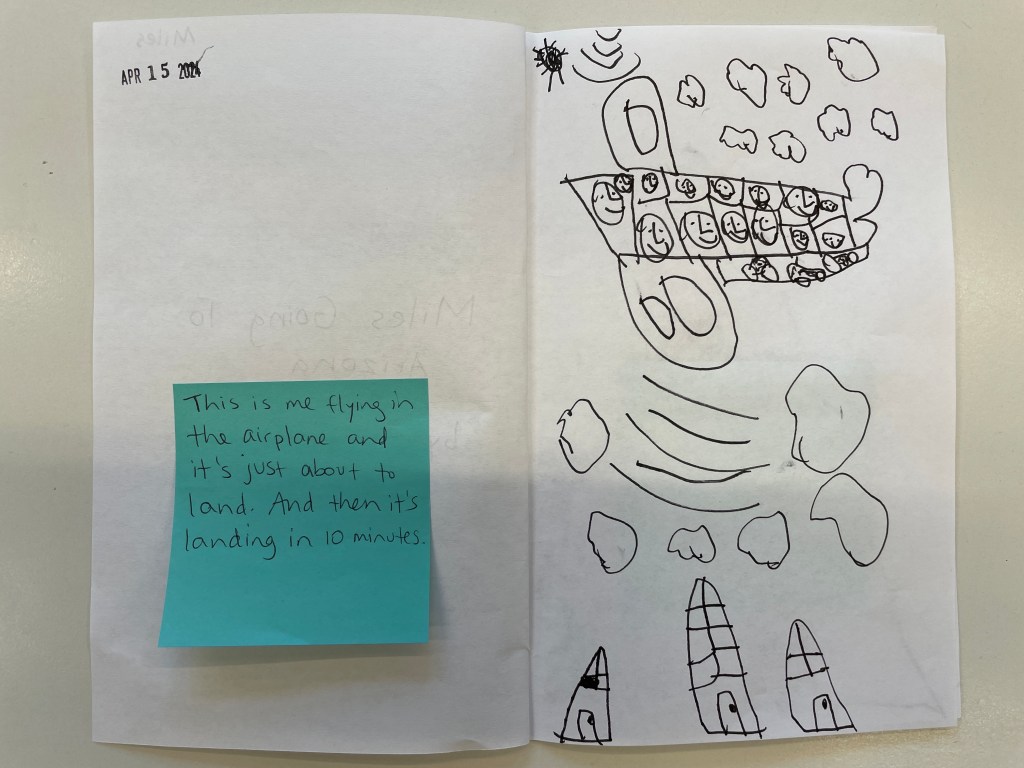
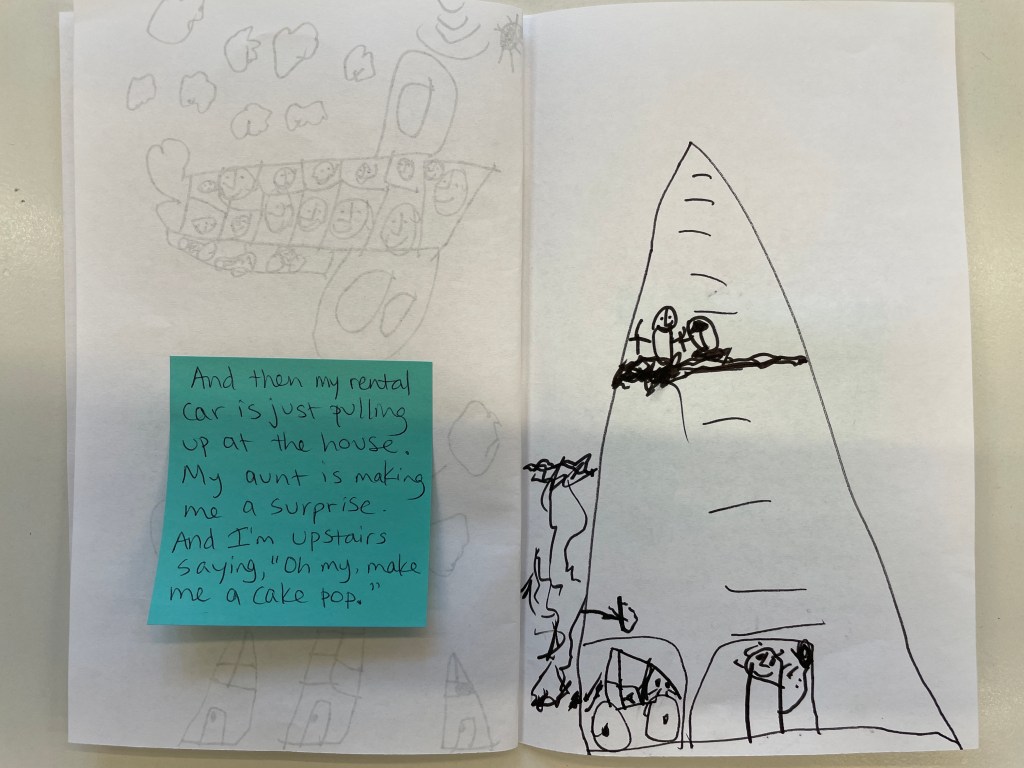

Napkin by A.T.
A.T. is a fluent Chinese speaker learning English. She tends to write stories that blend fiction with reality. In this example, a cat mommy and daddy represent her own parents and she is a little cat. I love the way that the cat mommy is on the computer and in a lot of meetings and the cat daddy comes back home and goes to sleep. The drawings have great energy and emotion, and the spoken words contain so many simple truths about the comings and goings of a busy and tired cat family.

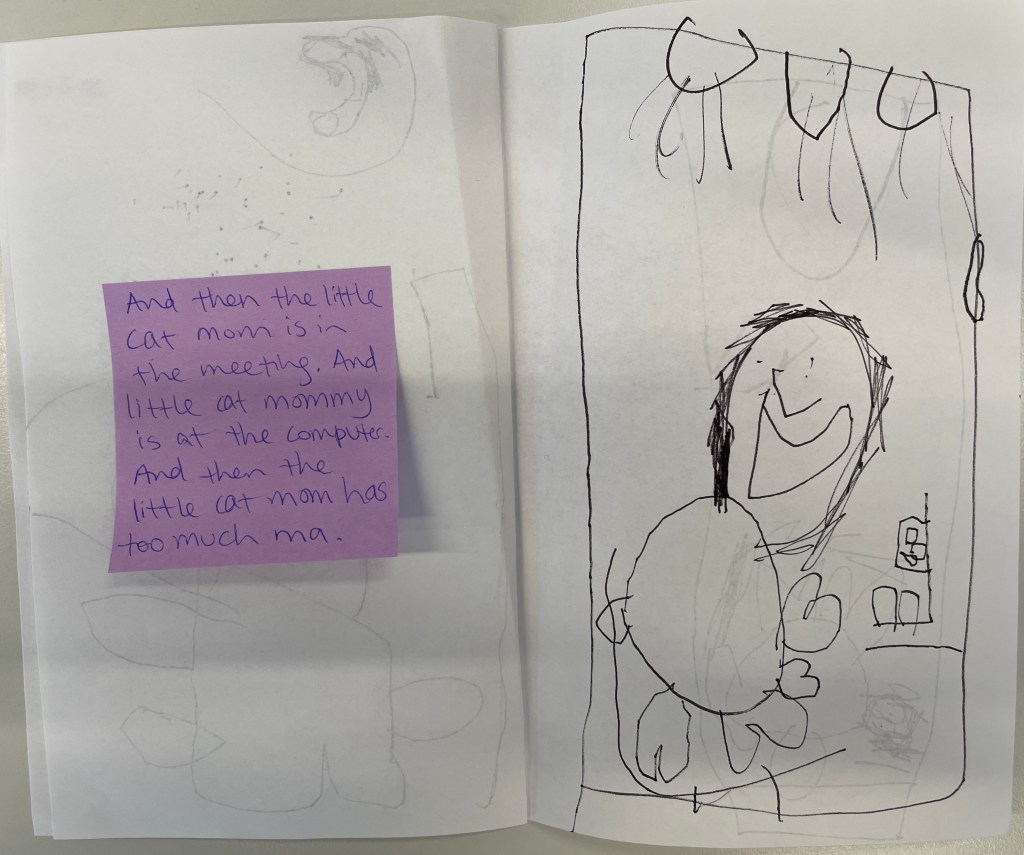
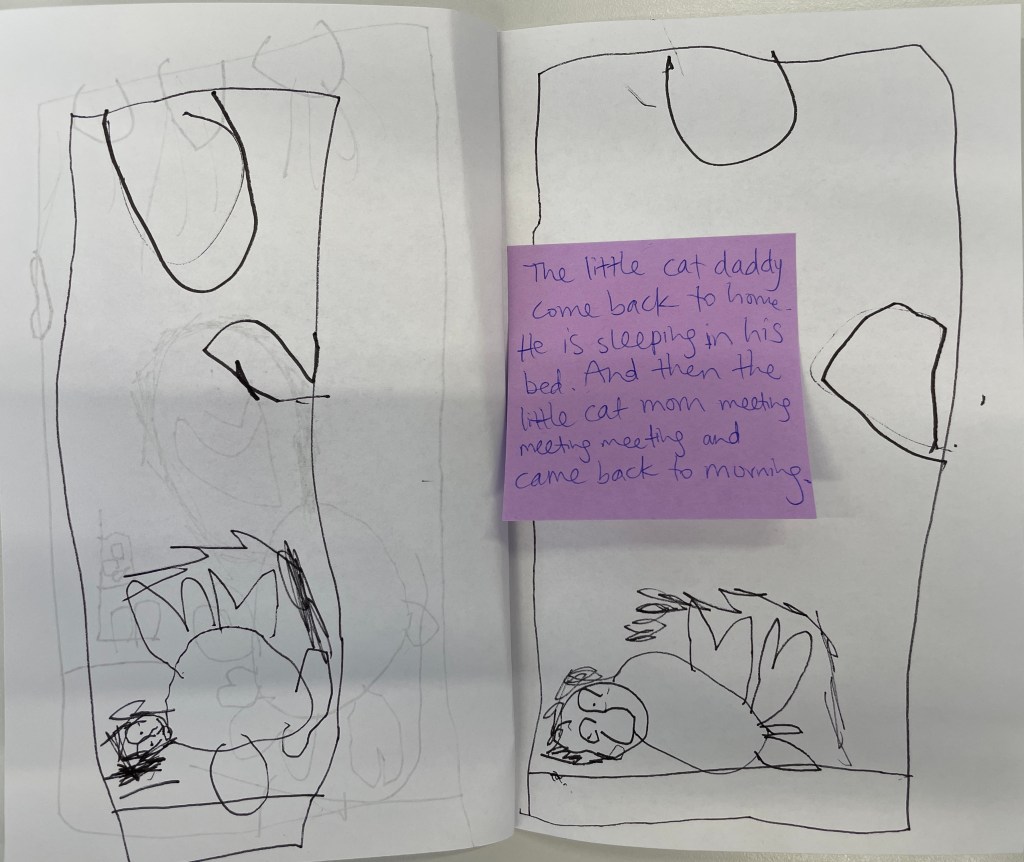
There Was a Baby in Mommy by V.V.
V.V.’s mother recently had a new baby. She wrote this story the day she was born. I love the way that she draws her mom with the baby inside an oval shaped womb. Her attention to the details of the baby’s position, her mother’s tiredness, and the back and forth nature of going to the hospital, checking on the baby, going home, and finally having the baby, are all very relatable and convey the anticipation one feels leading up to childbirth. Her parents were thrilled to receive and read the book. They tucked it safely away as a keepsake to be shared together for years to come.
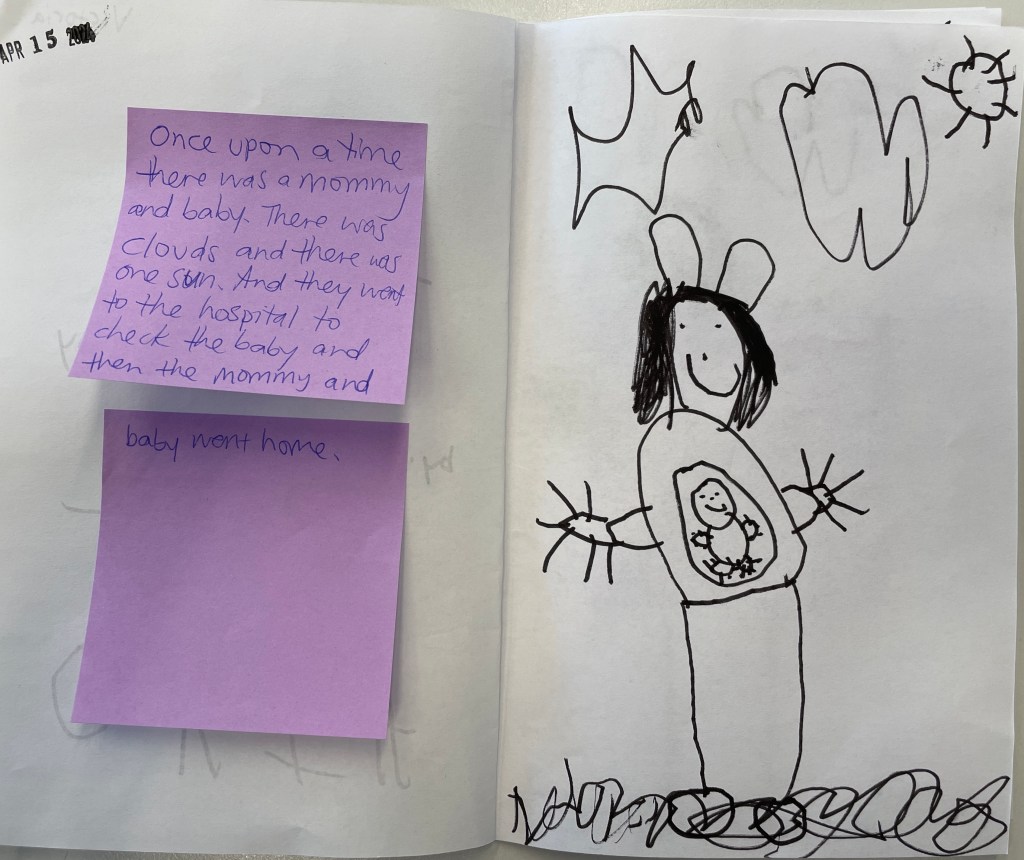

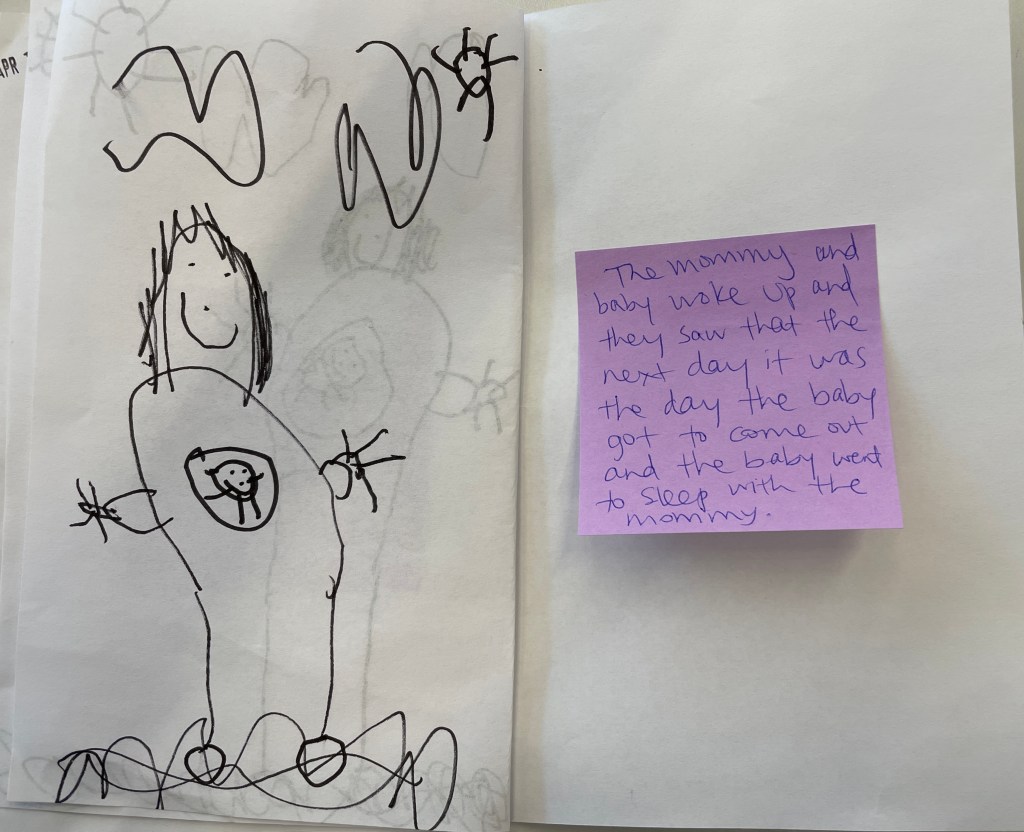
One Thing to Remember:
When young children write, their memories, recollections, current experiences, and future hopes and dreams swim together in a kind of “primordial soup.” Sometimes they are clear about the details, but other times they blend these events and emotions together. By drawing, talking, and sharing, children find ways to make sense of their world. It is our job as early childhood educators, parents, and caregivers to support these approximations and hold space for the individual child–who they are and what they care about in this (fleeting) moment in time.

